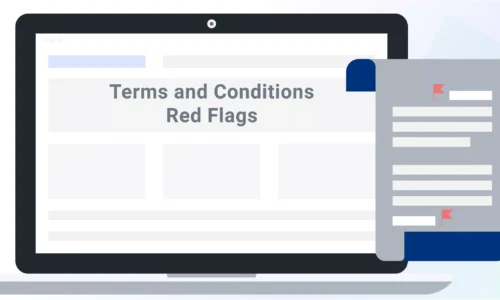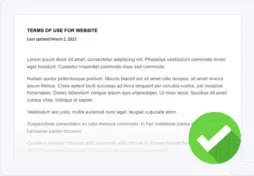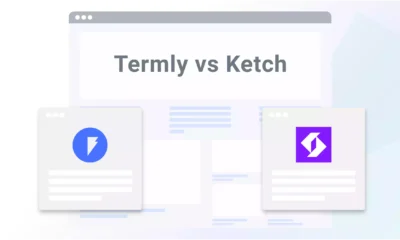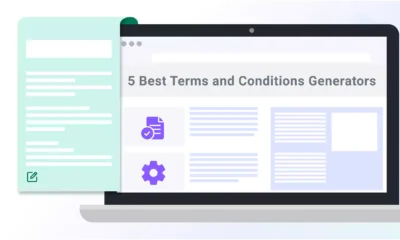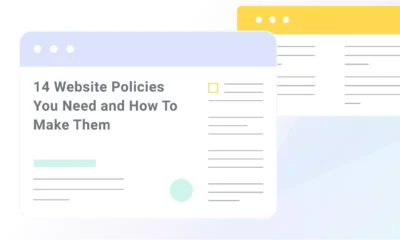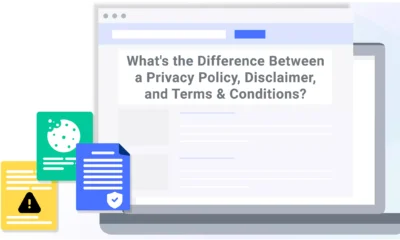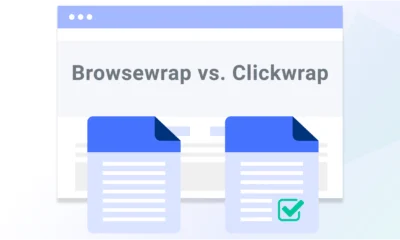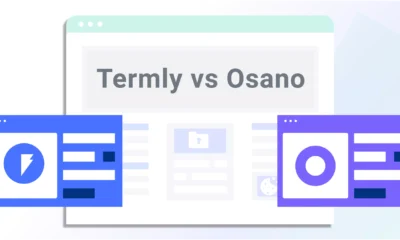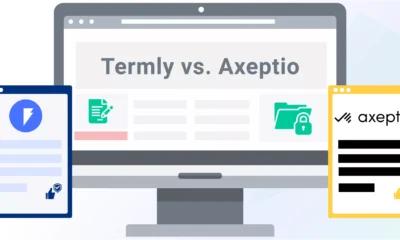A terms and conditions agreement is more than just a formality at the bottom of a website. It is a legally binding contract that defines the rules, rights, and responsibilities between a business and its users.
When written well, it protects both parties and sets clear expectations, but a poorly written agreement can lead to confusion, legal disputes, and even unenforceable terms.
In this guide, I cover the most common red flags found in terms and conditions agreements and explain why they matter, from vague clauses to missing key sections.
Whether you’re reviewing or drafting terms, these insights can help you avoid costly mistakes.
Common Pitfalls That Undermine Your Terms and Conditions
While some terms and conditions are carefully written, clearly structured, and regularly updated, others are little more than placeholders.
Whether you’re evaluating a competitor’s agreement or checking your own, spotting the warning signs can help you understand what’s missing, what’s risky, and what could render the entire document unenforceable.
Here are some of the most common red flags we found in terms and conditions, along with what they reveal about the business behind them.
Red Flag #1: There’s No Clear Acceptance Mechanism
When a terms and conditions agreement doesn’t include a straightforward way for users to accept it, that’s a major red flag.
With these agreements, it’s standard to ask users to select an unmarked checkbox to denote that they’ve read and agree to your terms, this is called clickwrap consent.
It’s also common to include text at the beginning of your document stating that “using your services means the user accepts and agrees to following your terms“, this is called browsewrap or indirect consent.
Either acceptance mechanism must be present, otherwise, that’s a red flag.
These standards were reinforced in 2022 in the case of Berman v. Freedom Financial Network, where the court held that a website’s terms were unenforceable because users were not given conspicuous notice and did not unambiguously agree.
The link to the terms was displayed in small gray text, and the user only had to click “Continue,” which the court ruled was insufficient to demonstrate informed consent.
Why does this happen?
Businesses may rely on agreement methods that don’t make it obvious to users what they’re consenting to.
For example, even though a simple “by continuing to use this site, you agree…” statement is enforceable in many jurisdictions, businesses must provide a clear link to the policy.
If the terms are buried in fine print or not linked in the footer, courts may find that users weren’t given fair notice.
Clickwrap models typically provide more substantial evidence of consent because they involve an active step from the user. Regardless of the method you use, the key issue is whether users have a fair and transparent opportunity to review and accept your terms.
Without that clarity, even well-written agreements risk being unenforceable.
What a good terms and conditions agreement looks like
Well-designed terms and conditions will:
- Display a clearly labeled link to the full agreement
- Clearly state how users can agree (e.g., checkbox, button, continued use)
Foodora offers a strong example by clearly separating agreement to the Terms and Conditions from consent for marketing communications, as shown in the screenshot below.
This approach helps ensure users understand exactly what they are agreeing to, without bundling contractual acceptance together with marketing consent.
Red Flag #2: It’s Packed With Legalese or Poorly Structured
If a terms and conditions agreement is hard to read, that’s a red flag and potentially a legal problem.
Dense walls of text, legalese, and a lack of structure can make an agreement inaccessible to the average user. If people can’t understand your terms, you may not be able to prove that they agreed to them.
Consumer protection and contract laws require that terms be presented in a way that users can reasonably understand.
For example, the European Union’s Unfair Contract Terms Directive requires that consumer contracts be “drafted in plain intelligible language and ambiguities are to be interpreted in favour of consumers.”
The UK’s Consumer Rights Act 2015 contains similar transparency standards.
If your terms are written in dense legalese or structured in a way that hides important obligations, you risk having parts of the agreement challenged or struck down.
Why does this happen?
Some businesses assume that sounding formal makes the terms more legitimate. Others may copy language from older agreements without updating it for clarity or format.
The result? Long paragraphs, outdated legal jargon like “hereinafter” and “aforementioned,” and no clear way to navigate the content.
What a good terms and conditions agreement looks like
Clarity is key. A strong agreement uses:
- Plain language
- Short, well-spaced sections
- Bullet points
- Descriptive headings to guide the reader
- Bullet points and spacing
All of these features help break up information and improve readability.
Take, for example, Twitch’s Terms of Service, shown in the screenshot below
Not only do they include a floating navigation bar to help users find what they’re looking for, but they also feature short summaries at the start of each section, breaking down the information into simple, easy-to-understand terms.
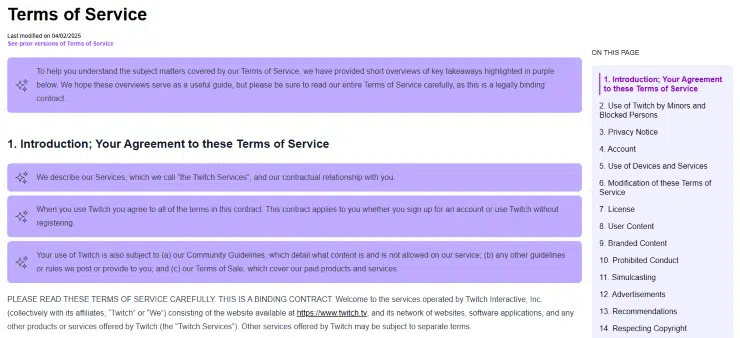
Red Flag #3: It Sets Unreasonable or Unlawful Terms
Even if a terms and conditions agreement is easy to read, it may still raise concerns if the terms themselves are overly aggressive, one-sided, or outright illegal.
Examples of what this might look like include:
- Requiring users to waive legal rights they can’t legally give up,
- Trying to prohibit users from posting negative reviews,
- Stating that the business is not liable for anything under any circumstances.
These kinds of terms often go too far, and when they do, courts won’t enforce them.
Take the recent case of Johnson v. Continental Finance Company (2025).
The company included a clause saying it could change the agreement at its “sole discretion,” meaning it could change the rules at any time.
The court said that made the agreement unfair, especially the part about how disputes would be handled, because the company could rewrite or cancel the rules at any time.
Why does this happen?
In some cases, this red flag occurs due to a lack of a proper legal review.
Businesses might copy from competitors, which is illegal. Or they might use AI-generated terms without verifying whether they’re enforceable or even applicable to their business.
Others may try to overprotect themselves by including broad disclaimers or restrictions, not realizing those clauses may not hold up in court.
What a good terms and conditions agreement looks like
A fair agreement should reflect a reasonable balance between protecting the business and respecting user rights.
Look for terms that:
- Align with relevant laws and industry norms,
- Avoid sweeping disclaimers or overreaching liability waivers,
- Clearly define limits in a way that’s proportional and transparent.
A good set of terms doesn’t just shield the business; it builds trust by showing that users are being treated fairly.
For example, The Guardian’s terms and conditions, shown in the screenshot below, avoids overly broad disclaimers and one-sided clauses.
It clearly outlines what users can and can’t do with content, defines limitations of liability in reasonable terms, and includes region-specific provisions that reflect applicable consumer protection laws.
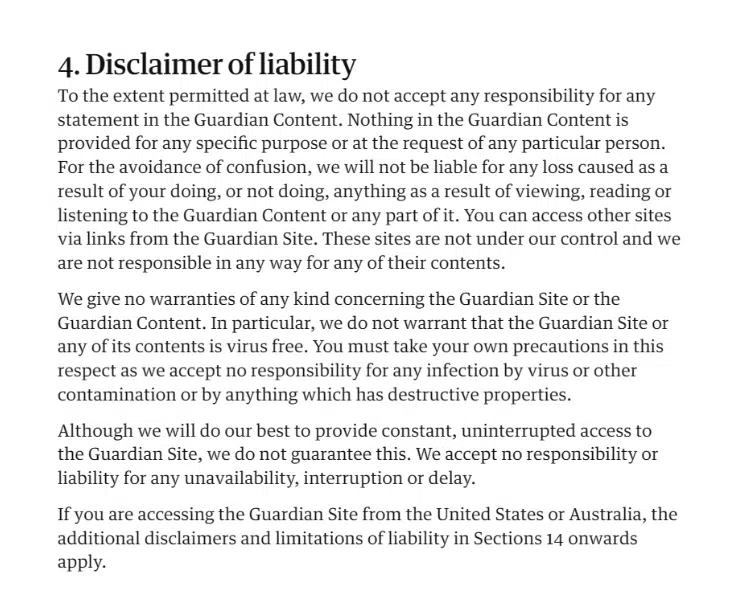
These terms strike a fair balance: protecting the business without overreaching or undermining user rights.
Red Flag #4: There’s No Contact Information
If a terms and conditions agreement doesn’t provide a way for users to ask questions, get clarification, or resolve issues, that’s a red flag.
Users need to know how to reach you if they have concerns about the terms, especially when the agreement covers topics like account termination or billing.
Leaving out basic contact information creates a barrier to resolution and may raise legal concerns in jurisdictions that require transparency and accountability.
Why does this happen?
Some businesses may assume that users will find their way to a general contact page, or they may overlook the need to include support channels directly in the legal agreement.
Others might intentionally omit contact details to reduce inquiries, but this comes at the cost of user trust.
What a good terms and conditions agreement looks like
Reliable agreements include:
- A support email address or contact form link,
- Information about how to escalate complaints or legal disputes,
- A clear point of contact for legal questions or issues.
Including this information shows that the business is open to feedback, willing to resolve issues, and transparent about its responsibilities.
Spotify’s Terms and Conditions do this particularly well, as shown below.
Their agreement includes a dedicated section outlining multiple ways users can get support, from account issues to legal concerns, and offers both a digital and physical point of contact.

This kind of transparency builds trust with users while helping businesses stay aligned with legal requirements.
Red Flag #5: It Looks AI-Generated and Untailored
When a terms and conditions agreement looks like it was copied and pasted from a generic AI output with no customization, that’s a major red flag.
Agreements that include mismatched clauses, irrelevant references, or placeholder text signal that the business hasn’t reviewed the terms carefully. These kinds of oversights can cause legal inconsistencies and damage user trust.
Why does this happen?
Some businesses rely on AI, like large language models, without applying human review or legal expertise.
As a result, the output may include:
- Conflicting or inaccurate provisions
- Clauses that don’t apply to the business or its services
- Missing jurisdiction-specific details
- Sections labeled with placeholders or vague instructions
- Illegal or wrong information
Worse still, if the agreement includes incorrect legal references or contradicts itself, it won’t be considered unenforceable in court.
Instead of saving time, it ends up just creating even more hassles.
What a good terms and conditions agreement looks like
The final agreement should:
- Be written and reviewed by a human
- Be tailored to the business’s specific practices and risks
- Include accurate, relevant clauses based on location and industry
- Omit placeholder text or references to non-existent services
- Maintain consistency in language, scope, and formatting
A strong agreement reflects thoughtful customization, not automation alone.
One strong example is Termly’s Terms of Use. Rather than relying on AI-generated text, this agreement is crafted and regularly updated by real legal professionals.
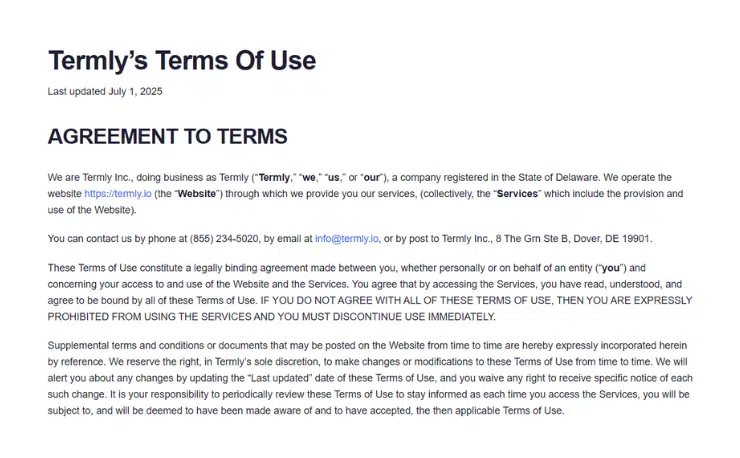
This kind of thoughtful, expert-reviewed content sets the standard: protecting your business while showing users that you take their rights seriously.
How Termly Can Help You Create Better Terms and Conditions
Drafting effective terms doesn’t have to be overwhelming, especially with the right tools.
Termly’s Terms and Conditions Generator helps you create legally backed, customizable agreements based on your specific services, risk level, and jurisdiction.
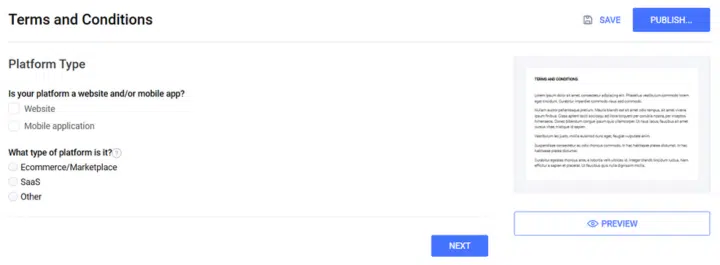
You can also explore our Terms and Conditions Template, which walks you through key sections and includes sample clauses. It’s a helpful resource for understanding how to structure your agreement and apply best practices throughout.
With Termly, you also benefit from ongoing updates to keep your policies aligned with the latest legal standards, all while saving time and reducing risk.
Protect your business and build user trust with terms you can stand behind.
Reviewed by Masha Komnenic CIPP/E, CIPM, CIPT, FIP Director of Global Privacy


